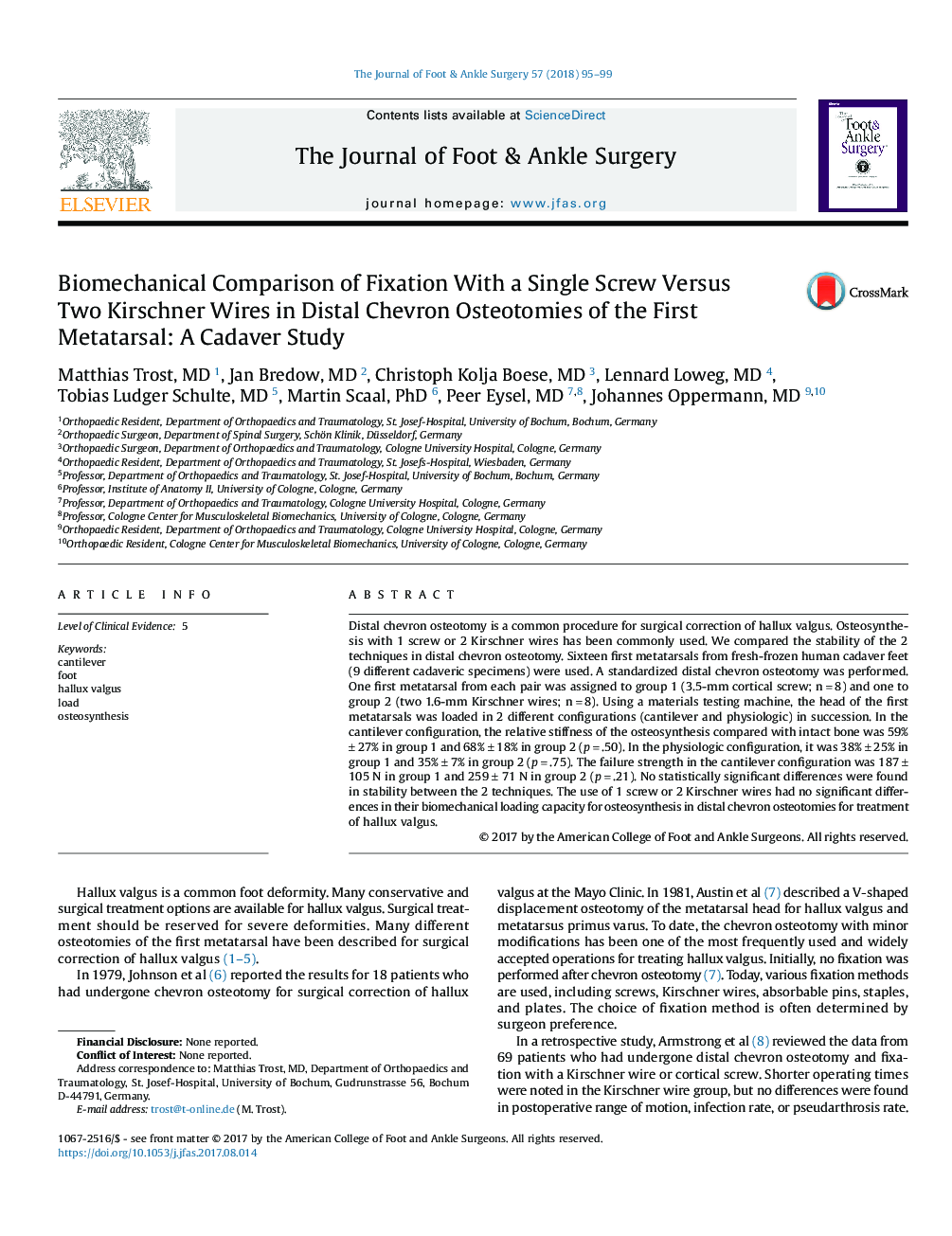| Article ID | Journal | Published Year | Pages | File Type |
|---|---|---|---|---|
| 8603385 | The Journal of Foot and Ankle Surgery | 2018 | 5 Pages |
Abstract
Distal chevron osteotomy is a common procedure for surgical correction of hallux valgus. Osteosynthesis with 1 screw or 2 Kirschner wires has been commonly used. We compared the stability of the 2 techniques in distal chevron osteotomy. Sixteen first metatarsals from fresh-frozen human cadaver feet (9 different cadaveric specimens) were used. A standardized distal chevron osteotomy was performed. One first metatarsal from each pair was assigned to group 1 (3.5-mm cortical screw; nâ=â8) and one to group 2 (two 1.6-mm Kirschner wires; nâ=â8). Using a materials testing machine, the head of the first metatarsals was loaded in 2 different configurations (cantilever and physiologic) in succession. In the cantilever configuration, the relative stiffness of the osteosynthesis compared with intact bone was 59% ± 27% in group 1 and 68% ± 18% in group 2 (pâ=â.50). In the physiologic configuration, it was 38% ± 25% in group 1 and 35% ± 7% in group 2 (pâ=â.75). The failure strength in the cantilever configuration was 187 ± 105 N in group 1 and 259 ± 71 N in group 2 (pâ=â.21). No statistically significant differences were found in stability between the 2 techniques. The use of 1 screw or 2 Kirschner wires had no significant differences in their biomechanical loading capacity for osteosynthesis in distal chevron osteotomies for treatment of hallux valgus.
Related Topics
Health Sciences
Medicine and Dentistry
Orthopedics, Sports Medicine and Rehabilitation
Authors
Matthias MD, Jan MD, Christoph Kolja MD, Lennard MD, Tobias Ludger MD, Martin PhD, Peer MD, Johannes MD,
